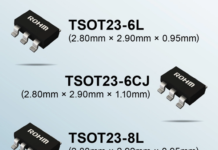
ST recently announced a partnership with Sanken, a Japanese company specializing in power modules, and ST wanted to explore one of the first fruits of this collaboration, the STGIK50CH65T. It is the highest-rated device in our family of STPOWER intelligent power modules (IPM), and it’s only the beginning. Indeed, the STGIK50CH65T reaches 650 V / 50 A, but we are already working on 1200 V / 10 A devices. The new SLLIMM (Small Low-Loss Intelligent Molded Module) High-Power family targets applications demanding 3 kW to 5 kW. Previously, teams had to use either discrete IGBT devices or add power devices and a controller separately. Our new STPOWER SLLIMM High-Power components, which combine power and intelligence, offer an all-in-one solution that increases efficiency and reliability.
STGIK50CH65T: What It Means for Engineers Today
The Challenges Behind the Rise in Higher-Powered Applications
Engineers must contend with industrial motor drivers, or electric cars, that demand a lot more power than previous models. Industrial motor drivers in servo motors, or professional washing machines, are more ubiquitous. General-purpose inverters (GPI) handling more than 3 kW of power are increasingly common. And, electric cars inaugurated high voltage batteries (from 400 V to 800 V, and more), enabling the use of new efficient power topologies for HVACs.
Traditionally, engineers get an intelligent power module that combines mainly the IGBTs and the diodes with the low and high side gate drivers. Such integrated devices simplify the PCB layout, take less space, improve reliability, increase efficiency, and reduce the time to market. Yet, markets today have almost no auto-grade IPM devices for applications running on the new high-voltage batteries. Similarly, there are only a few IPMs serving medium-to-high power industrial platforms. Hence, designing a compressor for an HVAC or servo motor, for instance, is complex and expensive.
The Solution for Greater Efficiency and Cost Reductions
ST and Sanken entered into a strategic partnership to better answer this challenge and offer one of the few auto-grade IPMs in the industry, which should arrive during the second half of 2021. Meanwhile, the first engineering samples for the STGIK50CH65T should land around March 2021. The new alliance between ST and Sanken enabled us to offer these unique solutions faster while also increasing our overall reach. Moreover, the two companies are mindful that engineers are looking to improve the cost-effectiveness of their product. Hence, the new SLLIMM High-Power devices will be pin-to-pin compatible with competing components to drive costs down.
STGIK50CH65T: What It Means for Engineers Tomorrow
The Arrival of Auto-Grade and Higher Rated Models
Many design teams may be reluctant to adopt such a new family of devices. It is common for engineers in our industry to favor part numbers that have been around for a while. However, the fact that ST and Sanken are already working on an auto-grade version of the STGIK50CH65T is a testament to their manufacturing capabilities. A 650 V / 50 A IPM is only possible because our production lines gained greater precision over time. Similarly, we can keep thermal dissipations low thanks to the direct bond copper between the silicon die and the package. ST and Sanken will also offer devices that can go as high as 1200 V / 10 A because of the robustness of our architecture. The new devices will operate in 20 kHz, and they’ll offer short-circuit as well as under-voltage lockout protection. Our components will also include a comparator for fault protection.
The Advantages of the ST Ecosystem
The STGIK50CH65T became public early so teams could get ready for it. Once we launch the component, engineers can expect the traditional thermal simulator (ST PowerStudio) and development boards (STEVAL-IPM series). Demand is high with some of our customers already showing interest. Yet, we also want to make sure that even smaller teams can start designing as rapidly as possible. Hence, the evaluation board will come with schematics to help engineers go to market faster. Simultaneously, the thermal simulator will ensure engineers come up with an appropriate cooling system that fits their performance, reliability, and noise requirements.
For more information about ST / Sanken Intelligent Power Module, please visit ST Blog



















